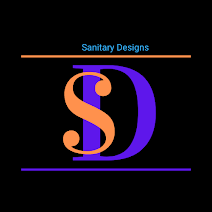The Hidden Risks of Non Hazardous Pharmaceutical Waste and How Facilities Can Handle It Effectively
Every hospital, pharmacy, and long-term care facility generates pharmaceutical waste as part of daily operations. While some of it is classified as hazardous under strict federal regulations, a large portion falls into the category of non hazardous pharmaceutical waste. Even though this type of waste poses fewer risks, it still requires careful management to protect the environment, ensure compliance, and maintain safe working conditions.
What Is Non Hazardous Pharmaceutical Waste?
Pharmaceutical waste is generally divided into two broad categories: hazardous and non-hazardous. Hazardous waste includes toxic, ignitable, corrosive, or reactive materials regulated under the Resource Conservation and Recovery Act (RCRA).
Non hazardous pharmaceutical waste, on the other hand, includes medications and related materials that do not meet these criteria but are still unsuitable for disposal in regular trash or down the drain. Examples include:
- Over-the-counter medications such as pain relievers or cold remedies
- Certain antibiotics and common prescription drugs not listed under RCRA
- Nutritional supplements and vitamins
- IV fluids without added hazardous drugs
- Saline and dextrose solutions
Although these items are classified as non-hazardous, they must be managed properly to prevent environmental contamination.
Why Proper Disposal Still Matters
It may be tempting to treat non-hazardous medications as harmless, but improper disposal can still cause harm. Flushing drugs into wastewater systems may impact aquatic ecosystems, while tossing them into general trash could result in unauthorized use or diversion.
For healthcare facilities, mismanaging even non-hazardous waste can create reputational issues and regulatory scrutiny. Communities expect healthcare providers to follow best practices, regardless of whether the waste is considered hazardous.
Best Practices for Managing Non Hazardous Pharmaceutical Waste
Facilities that handle pharmaceuticals should adopt clear protocols to manage all waste streams responsibly. Effective practices for non-hazardous pharmaceutical waste include:
- Segregation at the source – separating hazardous and non-hazardous waste to avoid cross-contamination.
- Use of labeled containers – designating containers for non-hazardous pharmaceuticals to prevent accidental mixing.
- Partnership with disposal vendors – working with licensed providers who can collect, transport, and dispose of waste safely.
- Staff training – ensuring employees understand which items qualify as non-hazardous and how to handle them properly.
- Documentation – maintaining records of disposal to demonstrate compliance during inspections.
By following these steps, facilities can ensure safe and efficient management without inflating disposal costs.
Environmental Responsibility
Even when pharmaceuticals are considered non-hazardous, disposal decisions have an environmental impact. Increasingly, healthcare facilities are working with disposal companies that offer eco-friendly options such as energy recovery or recycling of packaging materials. These efforts reduce landfill contributions and demonstrate a commitment to sustainability.
Conclusion
While non hazardous pharmaceutical waste does not meet the criteria for RCRA-regulated hazardous waste, it is far from ordinary trash. Proper segregation, storage, and disposal protect the environment, prevent diversion, and reinforce public trust in healthcare providers.
By treating all pharmaceutical waste responsibly, facilities show that safety and sustainability are priorities at every level of care.
We care when we share....!
You may like these posts
Search for (SD) Blogs...?
List of Royal Followers
Labels
AD SPACE
Recent Posts
3/recentposts
All Time Hits Posts

Why Proper Tattoo Waste Disposal Matters?
January 07, 2025

A Comprehensive Guide On Biohazard Waste Disposal in Tennessee
September 24, 2024

Difference Between Hazardous and Biohazard Waste
January 16, 2025

Common Mistakes When Disposing of Pharmaceutical Waste
November 06, 2024

A Detailed Guide On Pathological Waste
October 25, 2024

Role of Medical Waste Management Company For Public Health
September 11, 2024

Important Tips to Reduce Your Healthcare Waste
November 13, 2024
Popular Posts

How Nursing Home Waste Disposal Protects Residents and Staff
September 26, 2025

Medical Waste Is Most Hazardous at the Point of Generation
September 29, 2025

Summarizing The Risks With Regulated Medical Waste
November 04, 2024

Black Bin Waste in Hospital: A Case of Everyday Safety
September 30, 2025

Risks of Ignoring Medical Waste Disposal in Montgomery AL
September 19, 2025
Tags
- Biohazard Waste Disposal
- chemotherapy waste
- chemotherapy waste disposal
- dental waste disposal
- effective hazardous waste disposal
- hazardous trash
- hospital waste management
- Medical Waste Disposal
- Medical Waste Management
- pharmaceutical disposal
- pharmaceutical waste
- pharmaceutical waste containers
- pharmaceutical waste disposal
- sharps disposal
- veterinary waste disposal
- waste management
Recent Posts

How Nursing Home Waste Disposal Protects Residents and Staff
September 26, 2025

Dental Waste Disposal: A Case Study in Safe and Sustainable Practice
October 22, 2025

Cradle to Grave Hazardous Waste: From Start to Safe Finish
October 21, 2025

How Tattooist Waste Services Are Changing the Tattoo Industry
October 23, 2025

Medical Waste Is Most Hazardous at the Point of Generation
September 29, 2025
Copyright Blogger | All Rights Reserved Royal Cricket Blog

0 Comments